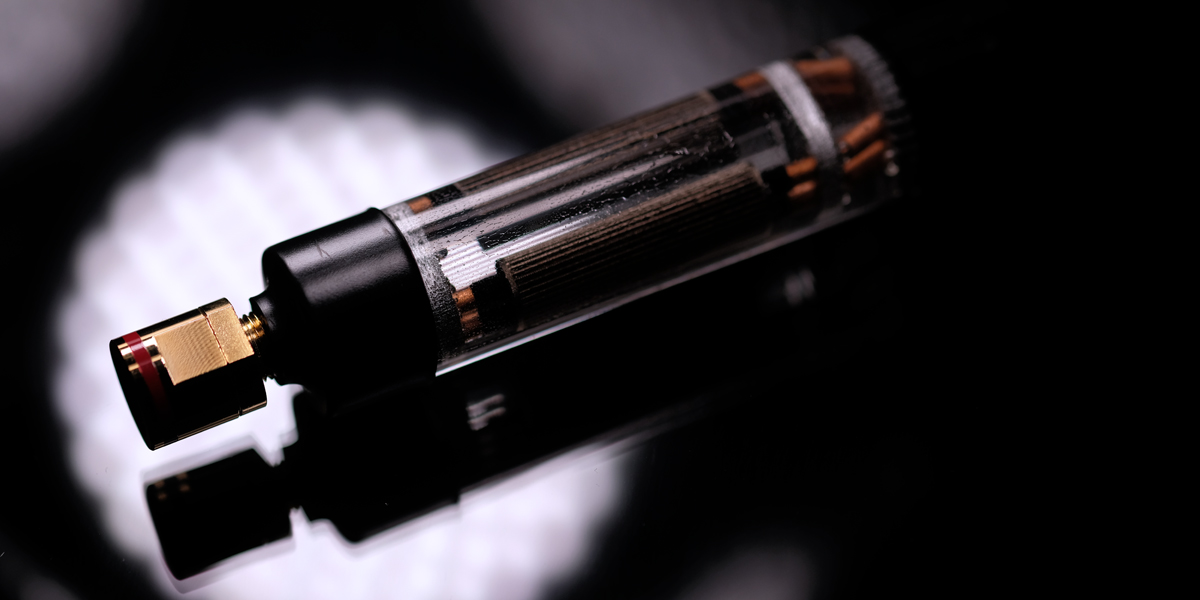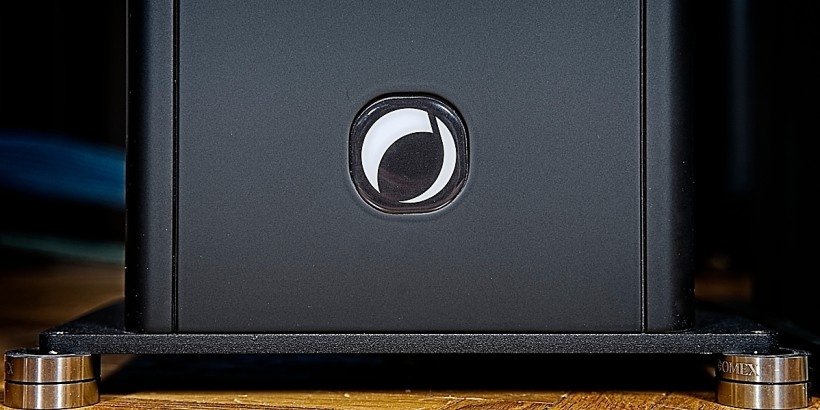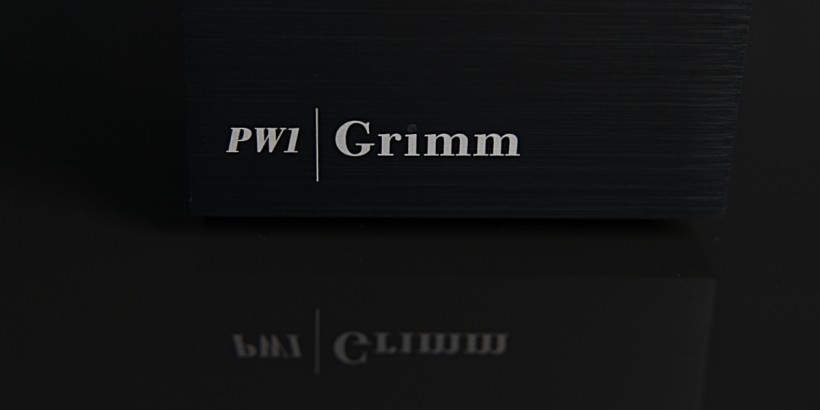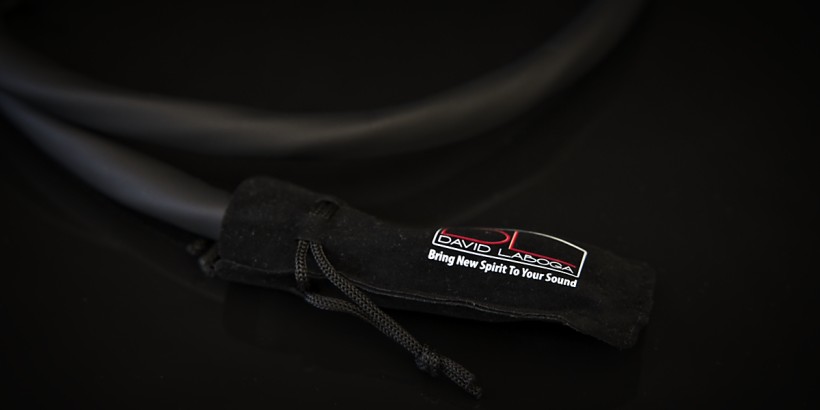For years LessLoss has been known for highly efficient signal conditioning solutions. This operation’s latest product – LessLoss Firewall for Loudspeakers – was designed to strip signal from noise just before it hits our speakers. Enjoy!
Introduction
This report unfolds the final chapter of the story that originated in mid 2019. To recap, that’s when I happily informed Sven Boenicke about my decision to pursue his W11 SE speakers. To follow the man’s suggestion, my initial purchase was upgraded to the top tier SE+ version and everything seemed to be sorted, but several months later yet another possible change was at play. It turned out that the Swiss became the secretive adopter of LessLoss’ latest Firewall technology, which he decided to include in his speakers integrated as internal modules. Upon asking him whether I should make this detour and pay extra for this new treatment, the man labeled its effect as spooky, which was good enough for me to jump on board. What happened later on was quite unexpected however, please see this material to learn more. To say that the firewalled Boenicke W11 SE+ caught me off guard would be a major understatement. Although the newcomer resembled the W11 SE version I reviewed here, it sounded much better than I remembered, which incentivized me to frame the experience into words. Unsurprisingly, the Lithuanian tech that unlocked it had me deeply intrigued. Questions multiplied. Was I delusional? Was one extra component capable of sonic shifts this severe? Or perhaps I fell for a swift mind trick and placebo? Then Srajan’s report came through which resonated with my findings. The LessLoss Firewall for Loudspeakers story published at 6moons.com resulted in an award, and later Martin Gateley of sound|kaos decided to incorporate this technology in his Vox monitors as well. No loony cell for me then, not just yet.
To say that the firewalled Boenicke W11 SE+ caught me off guard would be a major understatement. Although the newcomer resembled the W11 SE version I reviewed here, it sounded much better than I remembered, which incentivized me to frame the experience into words. Unsurprisingly, the Lithuanian tech that unlocked it had me deeply intrigued. Questions multiplied. Was I delusional? Was one extra component capable of sonic shifts this severe? Or perhaps I fell for a swift mind trick and placebo? Then Srajan’s report came through which resonated with my findings. The LessLoss Firewall for Loudspeakers story published at 6moons.com resulted in an award, and later Martin Gateley of sound|kaos decided to incorporate this technology in his Vox monitors as well. No loony cell for me then, not just yet.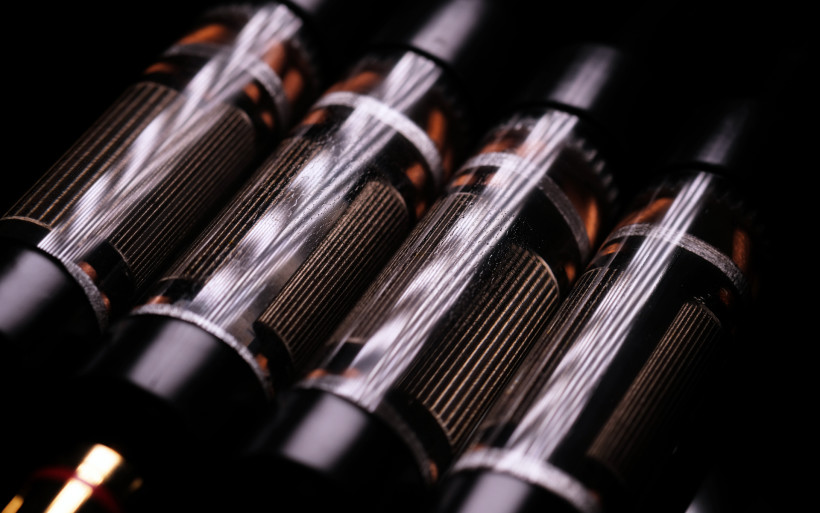 LessLoss CEO Louis Motek dispatched a set of plug-and-play Firewall loudspeaker modules shortly prior to publishing my W11 SE+ review. Already knowing what these critters did inside of this specific product, now I could investigate them as handy, universally applicable external devices. Of course, speakers without them integrated were a must, which naturally stretched this assignment in time by quite a bit. But after several months of exercises with four specimens other than my already internally firewalled W11 SE+, today’s the day.
LessLoss CEO Louis Motek dispatched a set of plug-and-play Firewall loudspeaker modules shortly prior to publishing my W11 SE+ review. Already knowing what these critters did inside of this specific product, now I could investigate them as handy, universally applicable external devices. Of course, speakers without them integrated were a must, which naturally stretched this assignment in time by quite a bit. But after several months of exercises with four specimens other than my already internally firewalled W11 SE+, today’s the day.
Build
The LessLoss Firewall for Loudspeakers arrived in the form of four separate small transparent barrels applicable in-between a speaker’s binding posts and speaker cable runs that would normally connect to them directly. Each module’s shorter end comes finished with a locking input terminal which will accept any form of cable terminations, whereas a pleasantly flexible short C-MARC umbilical fixed on the other side is what goes directly to the speaker input terminals. Upon order a customer decides whether he’d like to see banana plugs or spades there, and this choice has no bearing on the total price. Red/black thermoplastic markings on these pigtails conveniently determine positive/negative polarities, and it’s of key importance to not mix them up. Since these Lithuanian accessories are directional components designed to work at a specific polarity’s juncture indicated by color, connecting them to an amp’s posts or speaker’s terminals incorrectly defeats their fundamental purpose and is forbidden. Speaking of which, these latest Firewalls provide fully passive signal conditioning, which is why one could argue that it’s a specialized filter free from caps and coils. An amp will essentially see only 16mm2 of highly conductive solid core copper per module. This cross-sectional area is substantial enough to not have any impact on signal flow, resistance or the connected load’s impedance.
Red/black thermoplastic markings on these pigtails conveniently determine positive/negative polarities, and it’s of key importance to not mix them up. Since these Lithuanian accessories are directional components designed to work at a specific polarity’s juncture indicated by color, connecting them to an amp’s posts or speaker’s terminals incorrectly defeats their fundamental purpose and is forbidden. Speaking of which, these latest Firewalls provide fully passive signal conditioning, which is why one could argue that it’s a specialized filter free from caps and coils. An amp will essentially see only 16mm2 of highly conductive solid core copper per module. This cross-sectional area is substantial enough to not have any impact on signal flow, resistance or the connected load’s impedance. If this report’s Firewalls strike you as visually rather humble, the intricate elements trapped inside their transparent rock-hard resin carriers say otherwise. Here’s where it gets really interesting. Each unit’s four copper rods undergo their maker’s in-house developed Entropic Process, which in effect drastically ages them and leads to their unique matte look. But most importantly, this treatment changes the conductor’s internal structure so it becomes directional and far less susceptible to micro-vibrations, hence quieter. However, copper processed like so also becomes very pliable, resembling flimsy spaghetti noodles if unsupported, and here’s where the crystalline resin cylinders step in. They lock the complex delicate internals in place, thus maintaining their integrity intact, but also, together with the short cotton-clad C-MARC umbilical, provide mechanical decoupling and increase each module’s overall robustness.
If this report’s Firewalls strike you as visually rather humble, the intricate elements trapped inside their transparent rock-hard resin carriers say otherwise. Here’s where it gets really interesting. Each unit’s four copper rods undergo their maker’s in-house developed Entropic Process, which in effect drastically ages them and leads to their unique matte look. But most importantly, this treatment changes the conductor’s internal structure so it becomes directional and far less susceptible to micro-vibrations, hence quieter. However, copper processed like so also becomes very pliable, resembling flimsy spaghetti noodles if unsupported, and here’s where the crystalline resin cylinders step in. They lock the complex delicate internals in place, thus maintaining their integrity intact, but also, together with the short cotton-clad C-MARC umbilical, provide mechanical decoupling and increase each module’s overall robustness.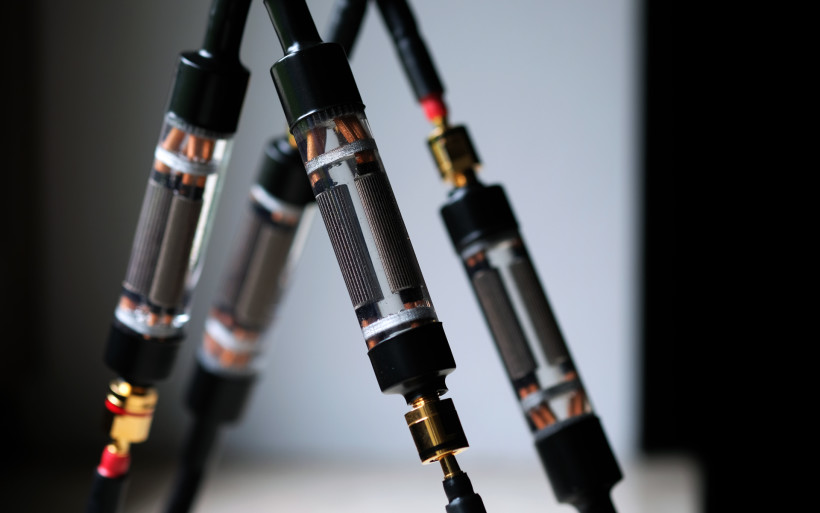 If entropy stands for gradual decline into unavoidable decay, then today’s copper gained new properties at a cost of becoming so old that it can too easily deform. Think far more than a human’s lifetime of constant usage, thus burn-in perhaps being just one part of aging. Naturally today’s item performs at its highest gear right out of the box. Each pair of its four internal conductive rods is surrounded by crucial finned parts, which are LessLoss’ latest Firewall incarnates. Over the years this in-house developed noise-killing technology underwent many iterations to now incorporate DMLS (Direct Metal Laser Sintering). In short, this process welds alloy powder into required 3D objects, which is conceptually somewhat similar to how regular 3D printers work, but it involves particles as small as 10 nanometers and high-powered ytterbium fiber lasers. The connection between finned cylinders and copper rods inside them isn’t physical, but based on magnetic fields. Needless to say, all components have to be perfectly aligned to maximize the noise-trimming effect, otherwise this fundamental goal is compromised.
If entropy stands for gradual decline into unavoidable decay, then today’s copper gained new properties at a cost of becoming so old that it can too easily deform. Think far more than a human’s lifetime of constant usage, thus burn-in perhaps being just one part of aging. Naturally today’s item performs at its highest gear right out of the box. Each pair of its four internal conductive rods is surrounded by crucial finned parts, which are LessLoss’ latest Firewall incarnates. Over the years this in-house developed noise-killing technology underwent many iterations to now incorporate DMLS (Direct Metal Laser Sintering). In short, this process welds alloy powder into required 3D objects, which is conceptually somewhat similar to how regular 3D printers work, but it involves particles as small as 10 nanometers and high-powered ytterbium fiber lasers. The connection between finned cylinders and copper rods inside them isn’t physical, but based on magnetic fields. Needless to say, all components have to be perfectly aligned to maximize the noise-trimming effect, otherwise this fundamental goal is compromised.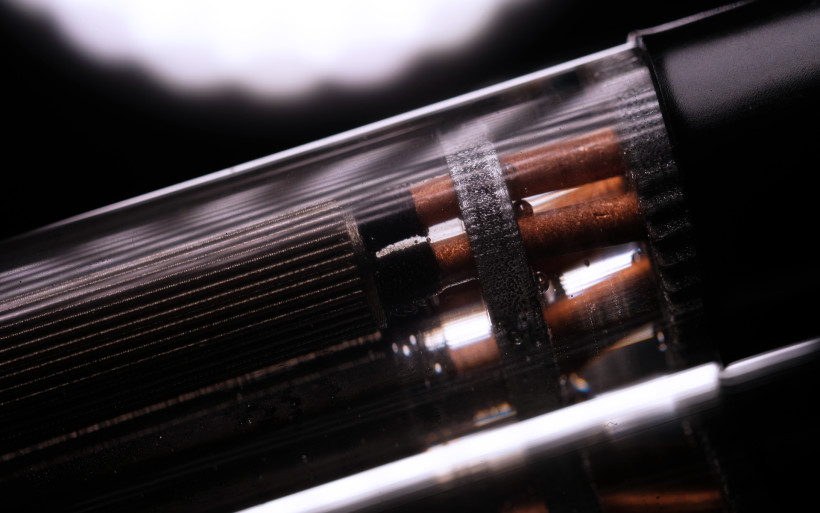 A set of four Firewalls for Loudspeakers demands a cool $1’656, which at first glance might seem a lot considering what lightweight items one gets in return. However, this stuff is the result of two decades of extensive proprietary work unlike anything else in the industry. You can’t get it elsewhere as OEM and assemble your own. Today’s copper rods alone need 30 hours to fully undergo the Entropic Process, which is almost twice as long versus 18 hours a single C-MARC power cord requires from start to finish. The transparent potting resin takes another 50 hours to fully cure and not damage/misalign the delicate internals in the process. Then each rough barrel needs to have excess material removed and be hand-polished prior to turning it into a finished product. If that’s not enough, NASA level sintering lasers, tightly sealed working chambers and staff dressed in hazmat suits are what it takes to print the finned structures around the copper conductors. I didn’t dare ask how much this specialist outsourcing service would charge per hour, but, judging from what I’ve been told, most likely a lot.
A set of four Firewalls for Loudspeakers demands a cool $1’656, which at first glance might seem a lot considering what lightweight items one gets in return. However, this stuff is the result of two decades of extensive proprietary work unlike anything else in the industry. You can’t get it elsewhere as OEM and assemble your own. Today’s copper rods alone need 30 hours to fully undergo the Entropic Process, which is almost twice as long versus 18 hours a single C-MARC power cord requires from start to finish. The transparent potting resin takes another 50 hours to fully cure and not damage/misalign the delicate internals in the process. Then each rough barrel needs to have excess material removed and be hand-polished prior to turning it into a finished product. If that’s not enough, NASA level sintering lasers, tightly sealed working chambers and staff dressed in hazmat suits are what it takes to print the finned structures around the copper conductors. I didn’t dare ask how much this specialist outsourcing service would charge per hour, but, judging from what I’ve been told, most likely a lot.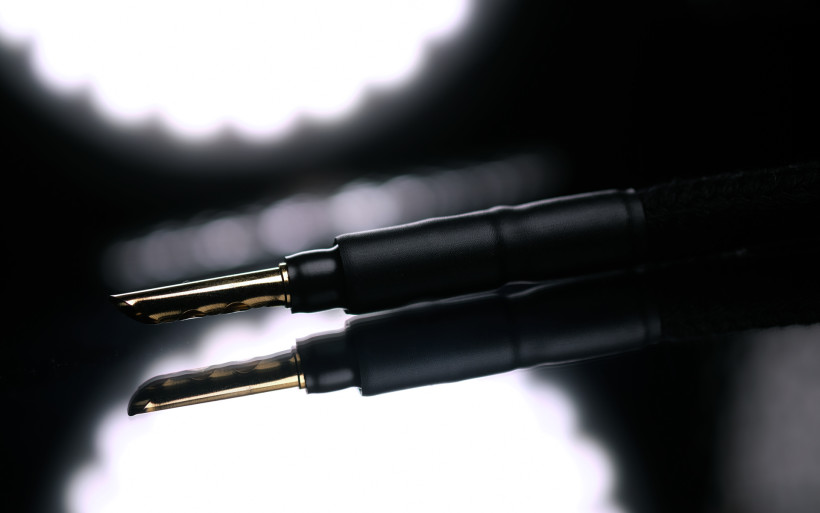 Louis Motek of LessLoss informed me that today’s effort swallowed four years of work and 80 iterations before repeatable results in line with the fundamental noise-killing concept finally emerged. That’s four springs of burning through cash without getting anything in return. Not only this, the latest Firewall tech is too intricate to cast or CNC it. Specialist services fit to weld alloy powder into firm 3D constructs opened their commercial gates fairly recently, hence are very costly. All things considered, the LessLoss route screams heavyweight commitment, and now’s the time to tell how it translates to performance.
Louis Motek of LessLoss informed me that today’s effort swallowed four years of work and 80 iterations before repeatable results in line with the fundamental noise-killing concept finally emerged. That’s four springs of burning through cash without getting anything in return. Not only this, the latest Firewall tech is too intricate to cast or CNC it. Specialist services fit to weld alloy powder into firm 3D constructs opened their commercial gates fairly recently, hence are very costly. All things considered, the LessLoss route screams heavyweight commitment, and now’s the time to tell how it translates to performance.
Sound
The beginning of this chapter is the usual place where associated hardware to evaluate a given product is listed, but this time around it’d be too much. To know exactly where this report’s Firewalls were used, each publication since early March 2020 fits the profile. I took my time with them, and obtained a good assortment of ingredients, including five speaker sets; my permanently firewalled Boenicke W11 SE+, Rethm Maarga, Spendor Classic 1/2, Boenicke W5 and Ø Audio Icon. There was one more product, but its identity is a secret for now.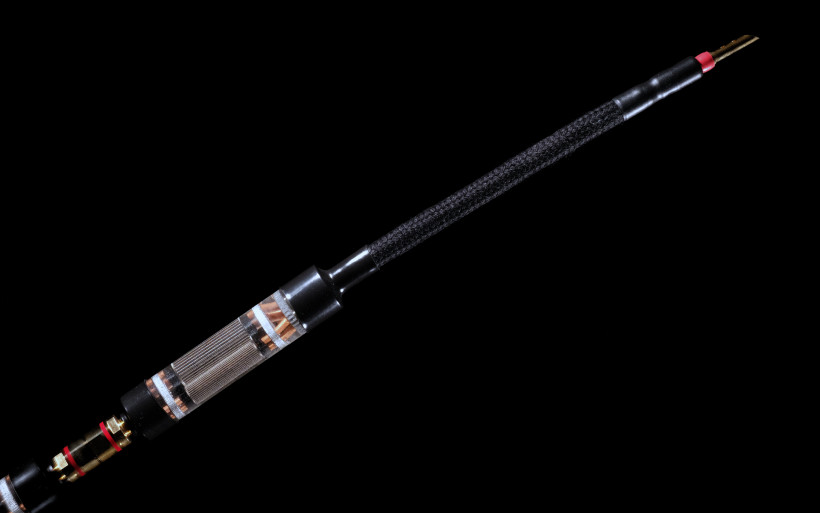 Prior to today’s delivery I already had a good whiff of what it could do in its internal form due to having the Boenicke W11 SE+ already at my place. Louis also explained very early on that his Firewalls can be used additively, one could daisy-chain multiple modules and push the silent envelope and focus more and more. Knowing this, it was only fair to connect my LessLoss plug-and-play loaner set to the W11 SE+ and investigate this for myself. In short, external Firewalls contributed clearly enough to present noticeable and meaningful results after the first on/off tryout. Although it wasn’t a shock by any means, the difference that formed after adding the standalone LessLoss set was audible enough to rather easily appreciate the associated benefits. Think extra moisture and gravity on vocals, rounder edges, tighter bass response, sound sources isolated more distinctly and an even darker backdrop behind them. Being familiar with this sort of action I expected nothing less. But the Firewall effect did stack indeed, and efficiently enough to consider external LessLoss modules in addition to those inside my speakers not as an excessive expense.
Prior to today’s delivery I already had a good whiff of what it could do in its internal form due to having the Boenicke W11 SE+ already at my place. Louis also explained very early on that his Firewalls can be used additively, one could daisy-chain multiple modules and push the silent envelope and focus more and more. Knowing this, it was only fair to connect my LessLoss plug-and-play loaner set to the W11 SE+ and investigate this for myself. In short, external Firewalls contributed clearly enough to present noticeable and meaningful results after the first on/off tryout. Although it wasn’t a shock by any means, the difference that formed after adding the standalone LessLoss set was audible enough to rather easily appreciate the associated benefits. Think extra moisture and gravity on vocals, rounder edges, tighter bass response, sound sources isolated more distinctly and an even darker backdrop behind them. Being familiar with this sort of action I expected nothing less. But the Firewall effect did stack indeed, and efficiently enough to consider external LessLoss modules in addition to those inside my speakers not as an excessive expense.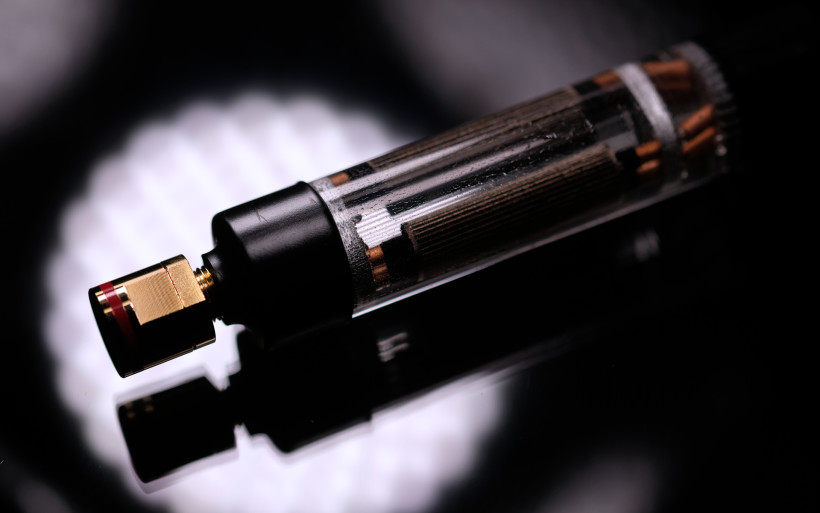 Next up was Rethm Maarga as the second speaker set, which is not of typical design. Its designer Jacob George cleverly merged active isobaric subs with full-range drivers rear-loaded with folded horns. This quicksilvery direct widebander breed is known for a shouty piercing attitude and a skinny body, and an amp capable of counteracting these culprits is left to the customer to pair. Luckily I had just the tools to squeeze enough performance out of Maarga and fully appreciate it, but as it turned out, the LessLoss pigtails substantially contributed as well. Their input was on many counts the same as in the case of my reference Boenicke boxes, but significantly more potent. Due to their purist crossover-less application, wideband transducers gladly track and magnify setup changes most regular speakers would show as subtle. That’s why the LessLoss weaponry was exceptionally effective working with the Indian load.
Next up was Rethm Maarga as the second speaker set, which is not of typical design. Its designer Jacob George cleverly merged active isobaric subs with full-range drivers rear-loaded with folded horns. This quicksilvery direct widebander breed is known for a shouty piercing attitude and a skinny body, and an amp capable of counteracting these culprits is left to the customer to pair. Luckily I had just the tools to squeeze enough performance out of Maarga and fully appreciate it, but as it turned out, the LessLoss pigtails substantially contributed as well. Their input was on many counts the same as in the case of my reference Boenicke boxes, but significantly more potent. Due to their purist crossover-less application, wideband transducers gladly track and magnify setup changes most regular speakers would show as subtle. That’s why the LessLoss weaponry was exceptionally effective working with the Indian load.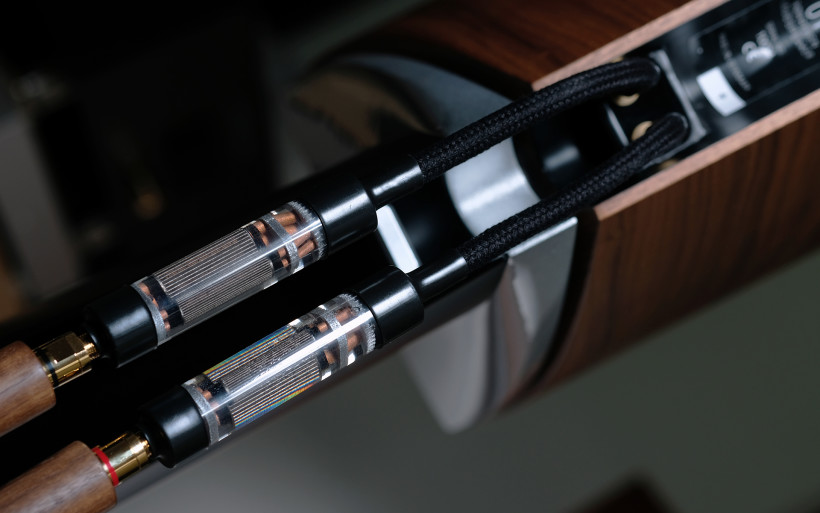 LessLoss signal conditioners improved Rethm’s performance by a lot via extra muscle tissue and substance injected wherever possible, with the natural exception of the active bass not subject to the Lithuanian treatment. Yet again vocals became rounder and fleshier, the natural color palette expanded, upstairs gained extra points on decay length and weight, air around virtual outlines became clearer, darker and more real, and any residual edginess was no more. All musical landscapes were aurally as explicit and accurate as the Indian widebanders supported by available hardware allowed, but the extra firmness the LessLoss set introduced was indeed a highly desirable step. This sort of efficacious work spelled noise reduction at its finest. But in case of speakers inherently lean, ethereal, edgy, texturally pale and geared towards hi-res performance, this report’s Firewall set emerged as profoundly effective and as free from any trade-offs as ever.
LessLoss signal conditioners improved Rethm’s performance by a lot via extra muscle tissue and substance injected wherever possible, with the natural exception of the active bass not subject to the Lithuanian treatment. Yet again vocals became rounder and fleshier, the natural color palette expanded, upstairs gained extra points on decay length and weight, air around virtual outlines became clearer, darker and more real, and any residual edginess was no more. All musical landscapes were aurally as explicit and accurate as the Indian widebanders supported by available hardware allowed, but the extra firmness the LessLoss set introduced was indeed a highly desirable step. This sort of efficacious work spelled noise reduction at its finest. But in case of speakers inherently lean, ethereal, edgy, texturally pale and geared towards hi-res performance, this report’s Firewall set emerged as profoundly effective and as free from any trade-offs as ever.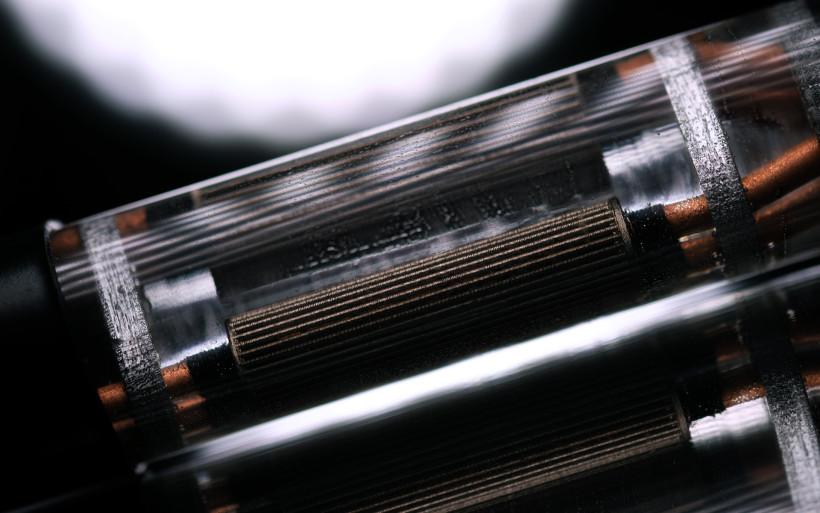 Although the Lithuanian barrels by design remove excess noise, their audibly additive action seems to contradict what filters tend to do. Srajan already pointed this out in his own LessLoss Firewall for Loudspeakers review, and that’s exactly how I understand this product’s job as well. It doesn’t add anything that’s not within a setup in the first place, but rather unlocks its untapped performance reserve normally held hostage by residual noise. It breaks shackles, drops veils, rescues, extracts and delivers safely home, that sort of liberating service. If after connecting a Firewall set one still doesn’t much feel like a freed prisoner, “ouch!” is the only word that comes to mind once the product is disengaged. That’s when our ears start to fully acknowledge what was just lost, and this sensation alone tells a lot how audible these latest Firewalls truly are. Their action in most cases will be severe.
Although the Lithuanian barrels by design remove excess noise, their audibly additive action seems to contradict what filters tend to do. Srajan already pointed this out in his own LessLoss Firewall for Loudspeakers review, and that’s exactly how I understand this product’s job as well. It doesn’t add anything that’s not within a setup in the first place, but rather unlocks its untapped performance reserve normally held hostage by residual noise. It breaks shackles, drops veils, rescues, extracts and delivers safely home, that sort of liberating service. If after connecting a Firewall set one still doesn’t much feel like a freed prisoner, “ouch!” is the only word that comes to mind once the product is disengaged. That’s when our ears start to fully acknowledge what was just lost, and this sensation alone tells a lot how audible these latest Firewalls truly are. Their action in most cases will be severe.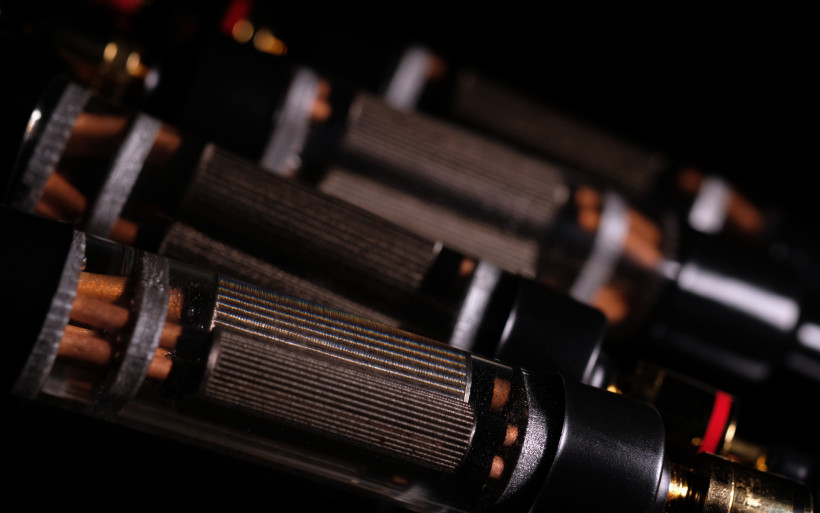 This report’s effective noise-killers don’t tinker with tonal balance or truncate sound in any particular way, thus to my ears are universal enough to recommend them to anyone. They flesh out internal moisture, inject heft and reveal color previously buried under a layer of excess noise. That’s why overall associated sonic shifts might strike untrained ears as more polite, mild and sensual, even though in reality they’re not. Bass stripped from noise usually gets fuller alright, but also tighter and more powerful, so the opposite of what its chunkier earlier life would suggest. Blacker canvas behind instruments might imply darker images, but more pronounced, weightier and longer lingering highs say otherwise. Ditto here: more solid yet less thin, glassy and chiseled vocal lines. The entire musical image gets bigger and tauter, but edginess that causes listening fatigue vanishes. In short, mature appreciation of noise rejection is a process, albeit very short and intense in case of this report’s product.
This report’s effective noise-killers don’t tinker with tonal balance or truncate sound in any particular way, thus to my ears are universal enough to recommend them to anyone. They flesh out internal moisture, inject heft and reveal color previously buried under a layer of excess noise. That’s why overall associated sonic shifts might strike untrained ears as more polite, mild and sensual, even though in reality they’re not. Bass stripped from noise usually gets fuller alright, but also tighter and more powerful, so the opposite of what its chunkier earlier life would suggest. Blacker canvas behind instruments might imply darker images, but more pronounced, weightier and longer lingering highs say otherwise. Ditto here: more solid yet less thin, glassy and chiseled vocal lines. The entire musical image gets bigger and tauter, but edginess that causes listening fatigue vanishes. In short, mature appreciation of noise rejection is a process, albeit very short and intense in case of this report’s product. The third speaker set that aids in this trial was Spendor Classic 1/2. Its sonic profile to quite an extent is the opposite of Rethm Maarga’s own voicing, thus it was predicted as less suitable for Firewalls. It was indeed, but these transparent plugs still elevated the former’s performance by several notches in the well-established direction. Once connected to a revvy synergistic amp and supported by today’s Firewalls, the Classic 1/2 didn’t behave any fuzzier than usual. Its tonal palette gained complexity and sophistication, which was mapped as the primary upshot, followed by its disposition to become more agile, composed and tighter than before. All these changes were enough to easily mark the latest Firewall as an upgrade perfectly compliant and worth pursuing. The amps used during the Spendor assignment nicely cut through these speakers’ natural flavour and Firewall’s known noise trimming job, to in effect provide bite, tightness, openness, and effectively land a spot on overall balance. I imagine that the Classic 1/2 within a syrupy mellow environment wouldn’t appreciate the Firewall’s contribution as much as it would pairing with an agile insightful amp. Fixing deeply mismatched rigs isn’t among things this report’s product purports to do.
The third speaker set that aids in this trial was Spendor Classic 1/2. Its sonic profile to quite an extent is the opposite of Rethm Maarga’s own voicing, thus it was predicted as less suitable for Firewalls. It was indeed, but these transparent plugs still elevated the former’s performance by several notches in the well-established direction. Once connected to a revvy synergistic amp and supported by today’s Firewalls, the Classic 1/2 didn’t behave any fuzzier than usual. Its tonal palette gained complexity and sophistication, which was mapped as the primary upshot, followed by its disposition to become more agile, composed and tighter than before. All these changes were enough to easily mark the latest Firewall as an upgrade perfectly compliant and worth pursuing. The amps used during the Spendor assignment nicely cut through these speakers’ natural flavour and Firewall’s known noise trimming job, to in effect provide bite, tightness, openness, and effectively land a spot on overall balance. I imagine that the Classic 1/2 within a syrupy mellow environment wouldn’t appreciate the Firewall’s contribution as much as it would pairing with an agile insightful amp. Fixing deeply mismatched rigs isn’t among things this report’s product purports to do.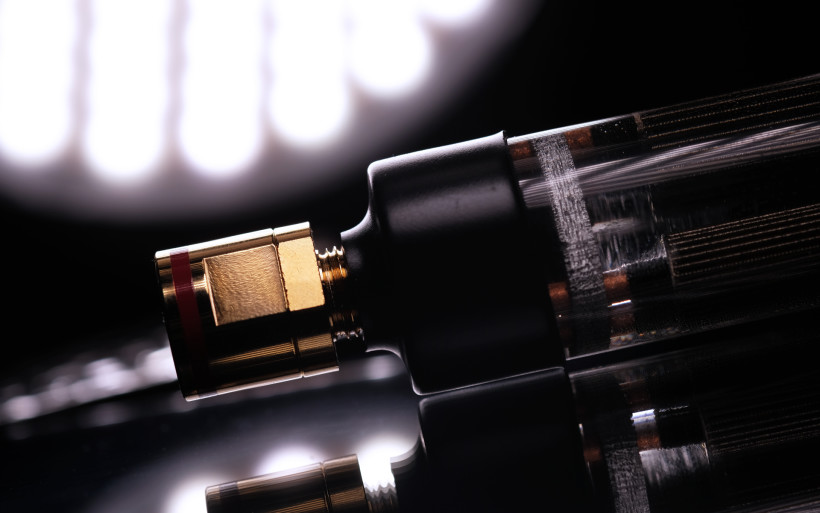 Exercises with Ø Audio Icon and Boenicke W5 added no surprises. As capable of brutal guttural massages and expressive horn talk as the former was, it enjoyed the connected Firewalls no less than the Maarga. Today’s item swiftly pushed the Norwegian’s sonics one tier up to now have it become more raw and explicit, but more refined and fuller on vocals and string instruments. Think substantial horsepower boost to effectively land faster 0-60 times, the same ride comfort, and a noticeably more luxurious interior. Surrounded by close walls in a nearfield setup at home, my W5s are already handicapped. The Firewall for Loudspeakers decreased their wobble, injected moisture into landscapes in-between them, brought key sound sources closer, made them more fluid and gutsier, and provided more powerful slam. In effect I could go higher with SPL without any hints of fatigue. To land similar upgrades, most likely I’d have to change my trusty NuForce STA-200 for something larger, beefier and far costlier than this report’s gang of four. Considering what these wicked noise sorters did time and time again, I honestly don’t have to fully understand how they go about their business. I imagine that most naysayers would stop caring about this specific aspect after giving these petite Lithuanian champs at least one brief try. That’s all it takes to get the memo.
Exercises with Ø Audio Icon and Boenicke W5 added no surprises. As capable of brutal guttural massages and expressive horn talk as the former was, it enjoyed the connected Firewalls no less than the Maarga. Today’s item swiftly pushed the Norwegian’s sonics one tier up to now have it become more raw and explicit, but more refined and fuller on vocals and string instruments. Think substantial horsepower boost to effectively land faster 0-60 times, the same ride comfort, and a noticeably more luxurious interior. Surrounded by close walls in a nearfield setup at home, my W5s are already handicapped. The Firewall for Loudspeakers decreased their wobble, injected moisture into landscapes in-between them, brought key sound sources closer, made them more fluid and gutsier, and provided more powerful slam. In effect I could go higher with SPL without any hints of fatigue. To land similar upgrades, most likely I’d have to change my trusty NuForce STA-200 for something larger, beefier and far costlier than this report’s gang of four. Considering what these wicked noise sorters did time and time again, I honestly don’t have to fully understand how they go about their business. I imagine that most naysayers would stop caring about this specific aspect after giving these petite Lithuanian champs at least one brief try. That’s all it takes to get the memo.
Summary
Although many audio accessories are fairly innocent expenses, the most effective such products I’m familiar with are found at the opposite end of affordable. Their significant performance gains can easily demand coin substantial enough to cover an entire setup’s total cost with change to spare. The LessLoss Firewall for Loudspeakers doesn’t cost as much, but surely is potent enough to fit the top shelf group.
It’s understandable that thick mental barriers have to be surmounted to even consider pursuing LessLoss Firewall for Loudspeakers, let alone spending money on these plugs. However, thus far nothing else like them was available on the market. They are the result of a two-decades long refinement of the initial core idea. It involved crazy measures and substantial investments, wasn’t possible until recently and isn’t based on off-the-shelf OEM parts bought for pennies. It’s robust, enjoyably easy to use with all passive speakers with no exceptions, and provides substantial sonic upgrades above all else. You could easily spend more and get less in return.
I usually suggest investigating costly accessories once all fundamental bases are covered, but this report’s LessLoss product stands tall as one I’d consider far earlier. It emerged as free from downsides and beneficial enough to effectively go beyond its supplementary additive role. If now I had to rebuild my entire setup from ground up, any passive loudspeaker set I can think of would get the Firewall treatment pronto. In your priority list it might not be, but in my roster it ranked high enough to become mandatory. ‘Til next time!
Associated Equipment:
- Amplifier: AGD Productions Vivace, Kinki Studio EX-M1, Trilogy 925, Bakoon AMP-13R
- DAC: LampizatOr Pacific (KR Audio T-100 / Living Voice 300B + KR Audio 5U4G Ltd. Ed.)
- Speakers: Boenicke Audio W11 SE+, Ø Audio Icon, Boenicke Audio W5, Rethm Maarga, Spendor Classic 1/2
- Transport: fidata HFAS1-S10U
- Line stage: Thöress DFP
- Speaker cables: Boenicke Audio S3, LessLoss C-MARC
- Interconnects: Boenicke Audio IC3 CG
- Power components: Gigawatt PC-3 SE EVO+, Gigawatt PF-2 + Gigawatt LC-2 MK2 + Audiomica Laboratory Ness Excellence/LessLoss C-MARC
- USB components: iFi audio iGalvanic3.0, iFi audio micro iUSB3.0, 3x iFi audio Mercury3.0, iPower 9V
- Rack: Franc Audio Accesories Wood Block Rack
- Music: NativeDSD, Roon
Retail prices of reviewed components in EU (incl. tax):
- LessLoss Firewall for Loudspeakers: $1’656/set of 4
Manufacturer: LessLoss


